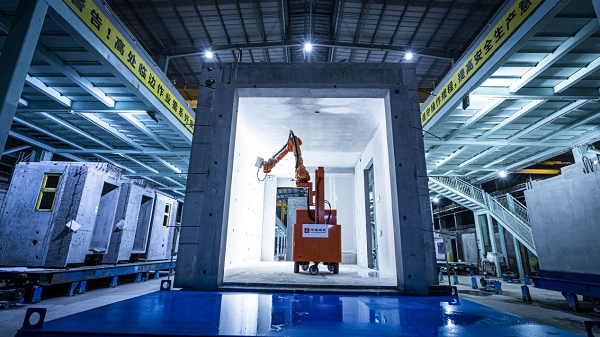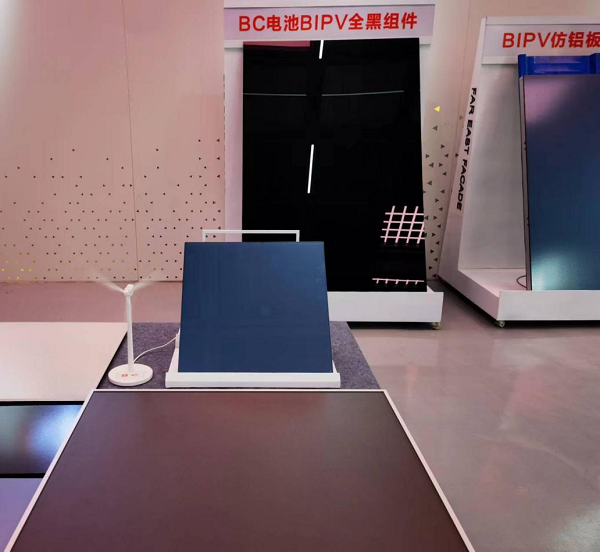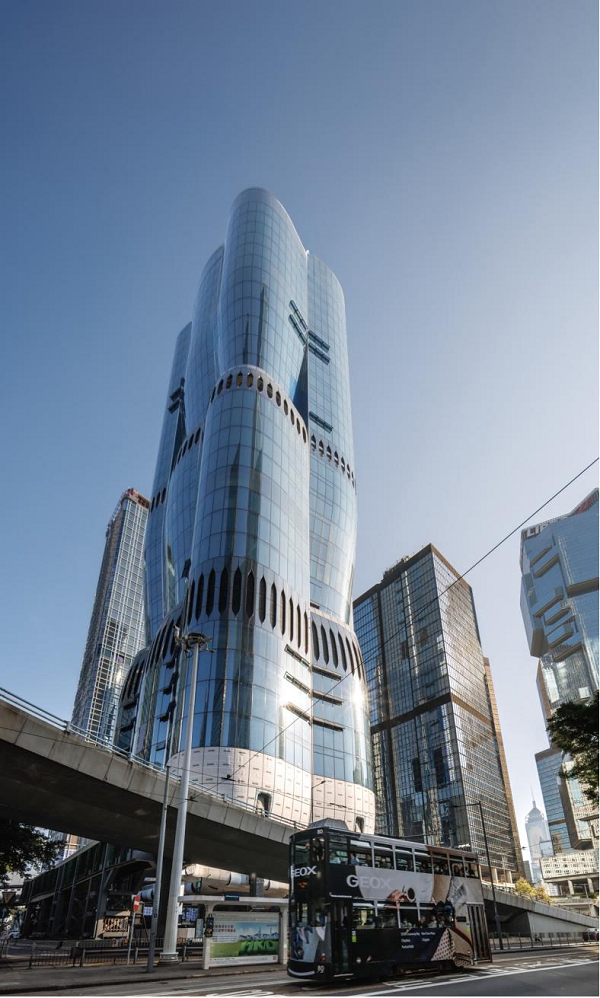When it comes to the construction industry, in people's traditional impression, the construction site is often dusty and noiseless. However, with the injection of new quality productivity, the construction industry is undergoing an unprecedented change and is moving towards intelligent, green and high-quality development. Technology innovation and green development are leading the transformation and upgrading of the construction industry.
Build a house like a car
When you walk into the fully enclosed noise reduction and dust insulation production workshop of China Construction Hailong Technology Co., Ltd., a subsidiary of China Construction, what catches your eye are intelligent and automated production lines and busy technicians and robots on the production lines. Here, the traditional impression of the construction industry has been completely overturned, replaced by a new production model that is efficient, intelligent and environmentally friendly.

Robots are spraying paint on production line
In the development of the construction industry, "building a house like a car" is not just an idea, but also a true portrayal of the innovation of intelligent construction technology in the foreseeable future. MiC (Modular Integrated Construction) technology, as the core of this change, is redefining the production and construction process of buildings. Through finely optimized design and efficient modular construction process, this technology transforms traditional construction sites into precision manufacturing environments within the factory, significantly improving construction speed and greatly shortening the engineering cycle. "Compared with traditional construction methods, MiC technology can complete up to 90% of the construction content in the factory, which can compress the construction time to the original 20%, effectively reducing the impact of construction on traffic, reducing site occupation, and significantly reducing construction noise and dust pollution." Zhao Baojun, general manager of China Construction Hailong Technology Co., Ltd., said that using the C-MiC (concrete modular integrated building) technology originally developed by China Construction Hailong, the first original demolition project in Xicheng District, Beijing, Building 8, Huapichang Hutong, took only 3 months to move the people into a new home built on the original site.
MiC technology is a combination of new building industrialization and intelligent manufacturing. The "scheme + product" model of the industrial chain optimizes the combination of production factors. Compound managers, industrial workers and human-machine collaborative production equipment improves the quality of production factors, introduces new production factors such as technology and data to achieve technological progress and efficiency improvement, significantly enhances total factor productivity, promotes the development of new quality productivity in the construction industry, and provides a solid foundation for the transformation, upgrading and sustainable development of the construction industry. "This innovative construction model not only improves building quality and construction safety, but also realizes efficient utilization of resources and minimizes environmental impact, and practices the modern architectural concept of 'building houses like a car'." Mao Ye, chief data officer of China Construction Hailong Technology Co., Ltd., introduced.
Building materials research and development enhances technological content
The construction industry is a "big carbon emitter". It will produce a large amount of greenhouse gases throughout the life cycle of building materials production, construction and operation and maintenance, and has huge potential for emission reduction. BIPV (Building Integrated Photovoltaics) technology is an important means of green transformation in the construction industry. By integrating photovoltaic power generation products into the building structure, buildings can achieve energy self-sufficiency and significantly reduce building carbon emissions.
In the corporate exhibition hall, Zhu Minfeng, chairman of Far East Curtain Wall (Zhuhai) Co., Ltd., a subsidiary of China Construction, introduced to reporters the photovoltaic building materials products such as imitation aluminum plates, imitation stones, colored double glass, double glass translucent, photovoltaic floor tiles and pattern customized double glass developed by the company in the field of BIPV. "Taking the 100 square meters of BIPV application as an example, about 12,000 kWh of electricity can be generated in Guangdong every year, which is enough to meet the annual electricity demand of about 6 households, significantly reducing their dependence on traditional energy and reducing carbon emissions." Zhu Minfeng introduced.

Under indoor light conditions, the electricity generated by the 0.25㎡ imitation aluminum plate photovoltaic building materials can drive the DC fan with a voltage of 5V.
The application of BIPV technology is an important reflection of the concept of green construction. It combines technological innovation and model innovation to achieve efficient integration of construction and energy. Through the off-grid power supply characteristics, the BIPV system can be self-used, greatly improving the efficiency of energy utilization and environmental friendliness.
Overcome the global problem of curtain wall construction
As the construction curtain wall contractor of the world's tallest building, Burj Khalifa, the Far East curtain wall not only gives the building a garment of light and shadow, but also reaches a new height in the industry in the application of construction technology. Through the digital design and construction technology innovation of hyperbolic curtain walls, the world-class problem in the field of hyperbolic - the manufacturing and installation of hyperbolic twisting units is solved.

Architectural curtain wall of the Melly Road project in Central, Hong Kong
"If the curtain wall is the outer cloak of the building, then the hyperbolic curtain wall of Meilidao is a 'high-end customization' in the architectural industry." Zhu Minfeng said, "In order to achieve the petal-like building shape of the Meilidao project, all curtain wall components need to be customized separately, bend the metal to a variety of three-dimensional shapes at room temperature like twisting, and ensure millimeter-level accuracy, so that the building facade will present a free and smooth curved surface shape." It is understood that the hyperbolic twist unit technology independently developed by Far East Curtain Wall breaks the bottleneck of global hyperbolic curtain wall technology and realizes prefabricated construction of the facade of the curved building. In 2023, the company also successfully won the bid for the Shenzhen Oujia Building project, which is one of the most complex curved glass curtain wall projects in the world.
Technological innovation represented by intelligent construction and building materials research and development innovation is reshaping the construction industry and laying a solid foundation for the green transformation and upgrading of the construction industry.